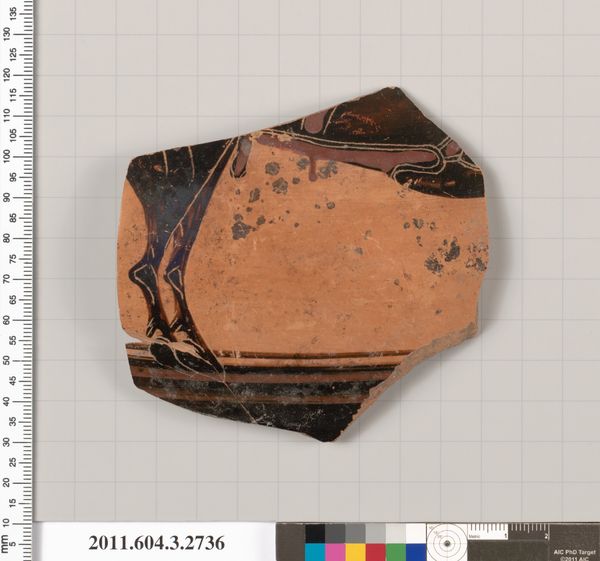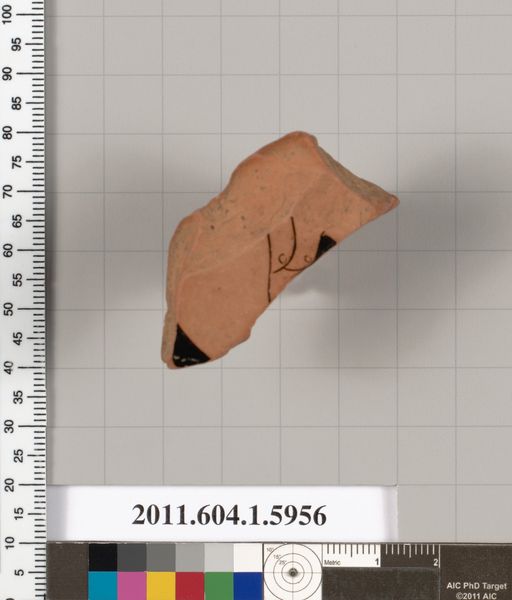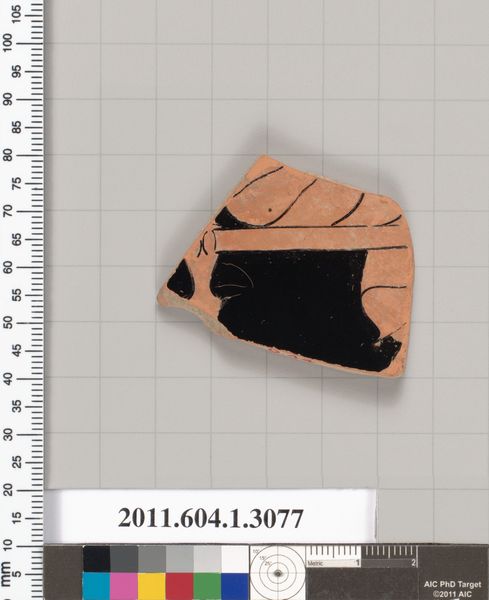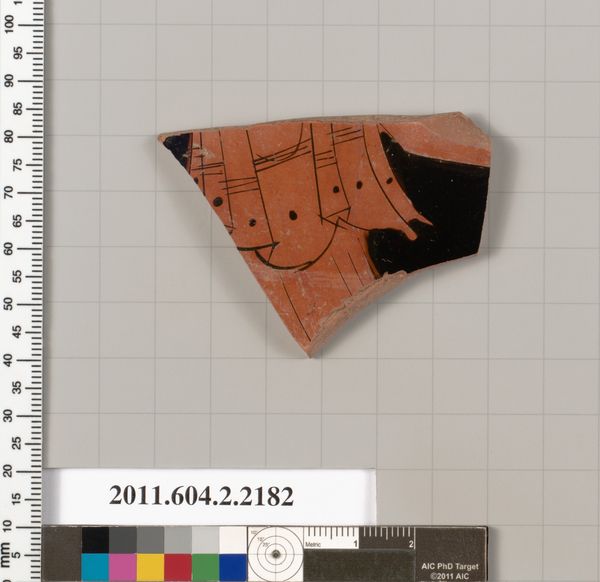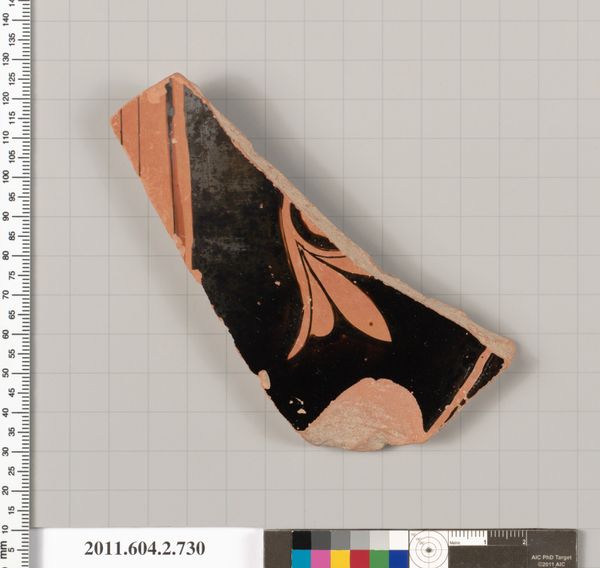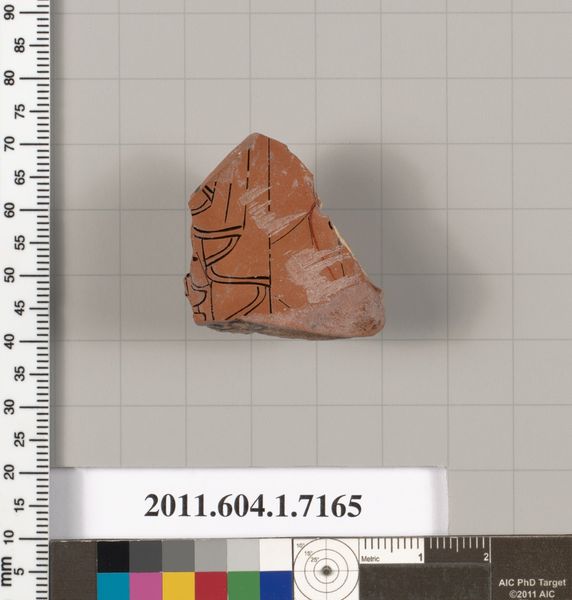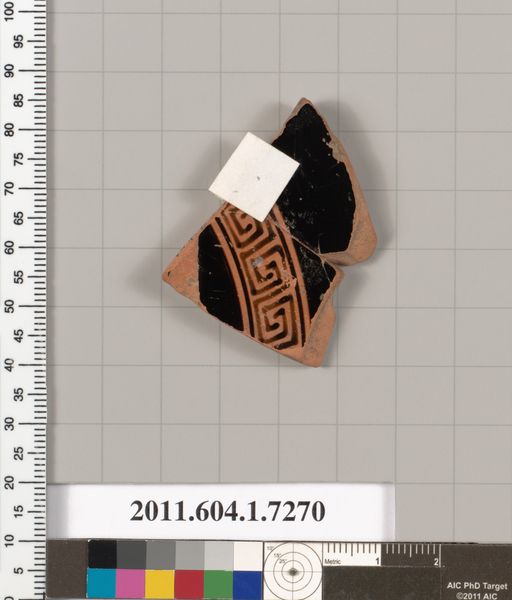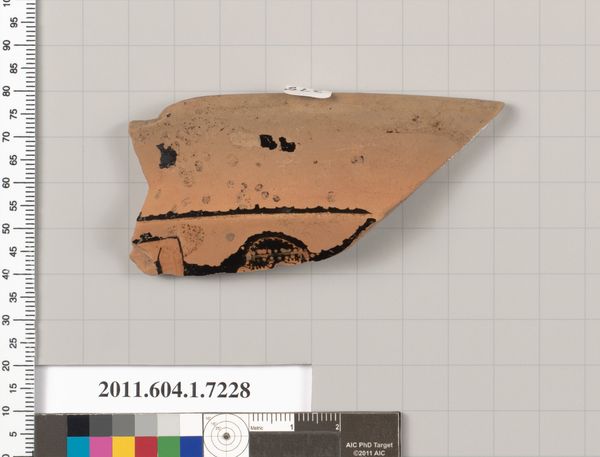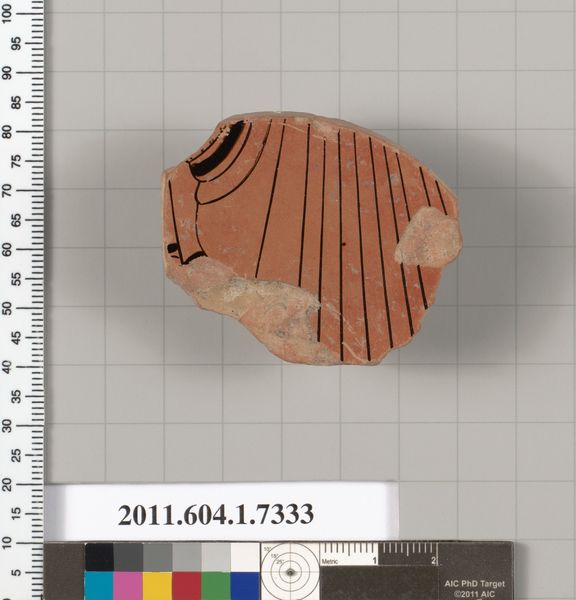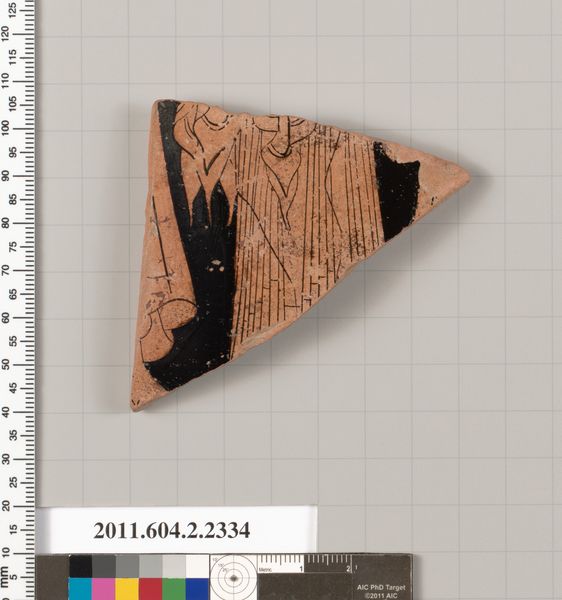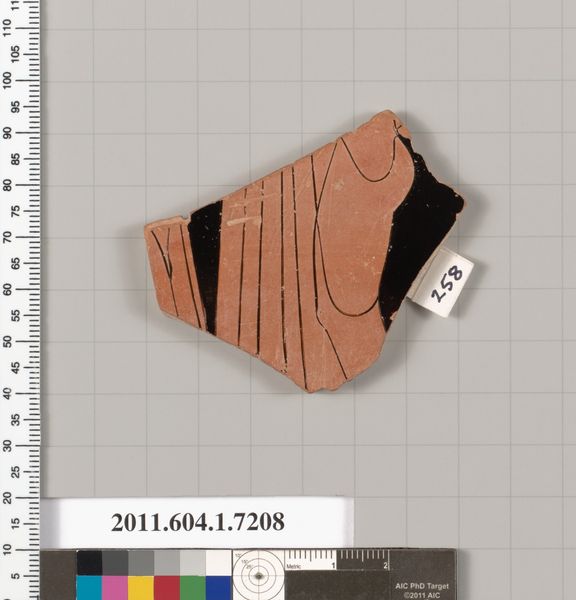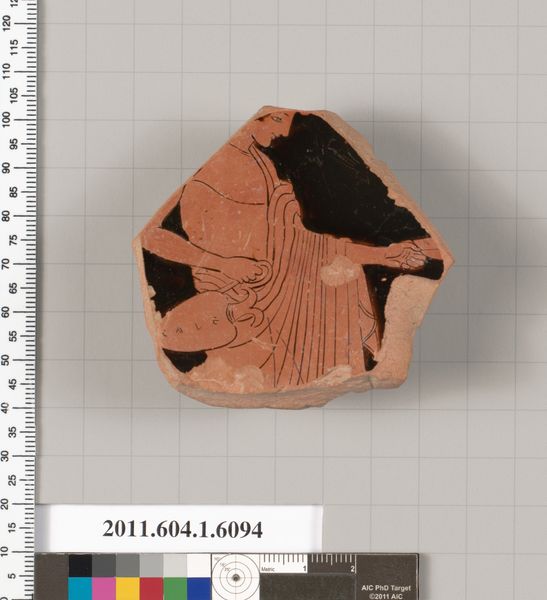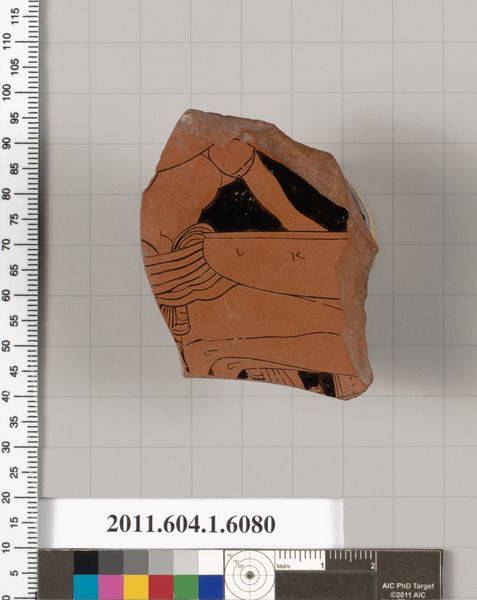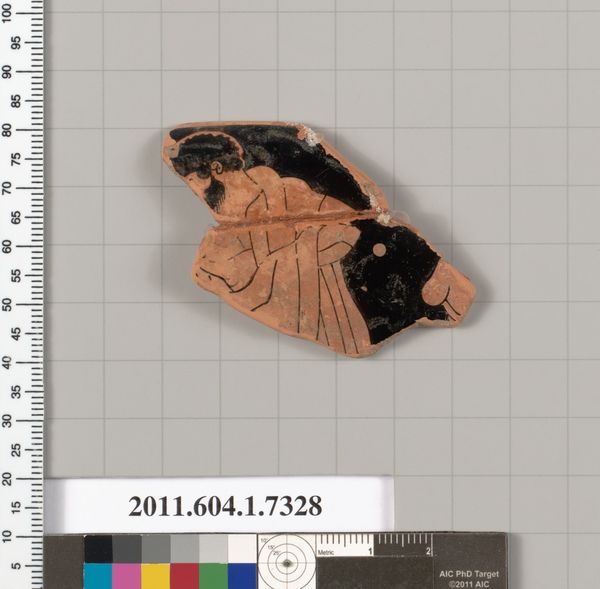
Terracotta fragment of a column-krater (bowl for mixing wine and water)? 530 BC
0:00
0:00
drawing, terracotta
#
portrait
#
drawing
#
object
#
greek-and-roman-art
#
vase
#
painted
#
figuration
#
print-effect
#
roman-art
#
ancient-mediterranean
#
terracotta
Copyright: Public Domain
Curator: We're looking at a terracotta fragment, likely part of a column-krater, a bowl used in ancient Greece for mixing wine and water. It dates back to around 530 BC. Editor: My first impression is one of serene melancholy. The fragment shows a human figure, possibly reclining, rendered in dark silhouette against the terracotta, with delicately etched details, creating a dreamlike quality. Curator: Indeed, the use of terracotta in these mixing vessels reflects its wide availability and affordability within ancient Greek society. Kraters, such as this fragmented piece, held significance during social gatherings known as symposia, which had deep cultural implications. Editor: The head is what intrigues me most—the elegant curve of the nose and brow, even in this incomplete state, speaks of refined artistry and conveys an enduring impression of the human form, but who this person might have been and what role they played remains unclear. It brings to mind similar depictions of individuals in repose and contemplative moods across many different eras and media. Curator: True, identifying the subject is speculative given the partial nature of the find. Yet the scenes painted on these kraters often portrayed mythological or narrative themes relevant to the symposia discussions—heroic deeds, divine interventions, cautionary tales. These would spur conversation during the wine-drinking ceremonies and reinforce social and political values. Editor: Seeing this small section sparks such longing, however, for all that remains unseen. You imagine its former glory with complex narratives wrapping around the vase that invite meditation about human destiny and our relationship to the world and its gods. Curator: That sense of loss also prompts speculation about the preservation, display, and the ongoing interpretation of the Classical world and how contemporary societies assign value to and interpret artifacts within museum settings. Editor: Despite its damaged form, I still find myself captivated by the emotional impact that one ancient image may transmit through symbols and suggestive contours, forging connections over vast expanses of history and inviting profound thought.
Comments
No comments
Be the first to comment and join the conversation on the ultimate creative platform.
